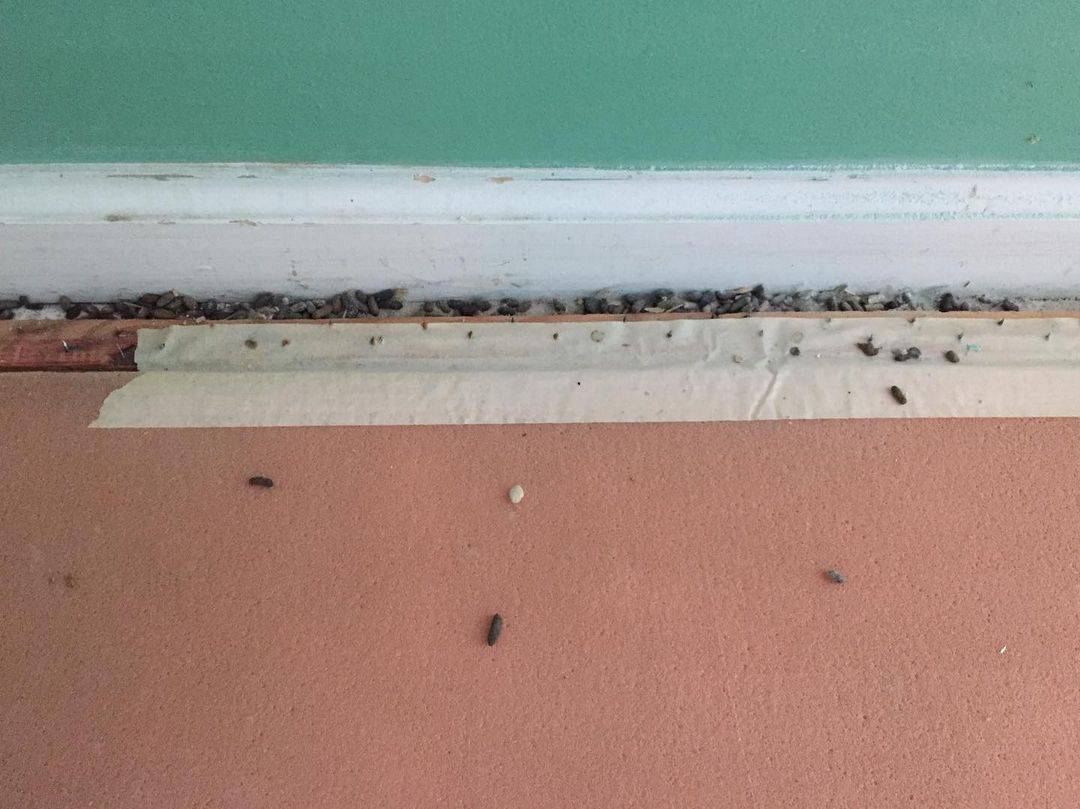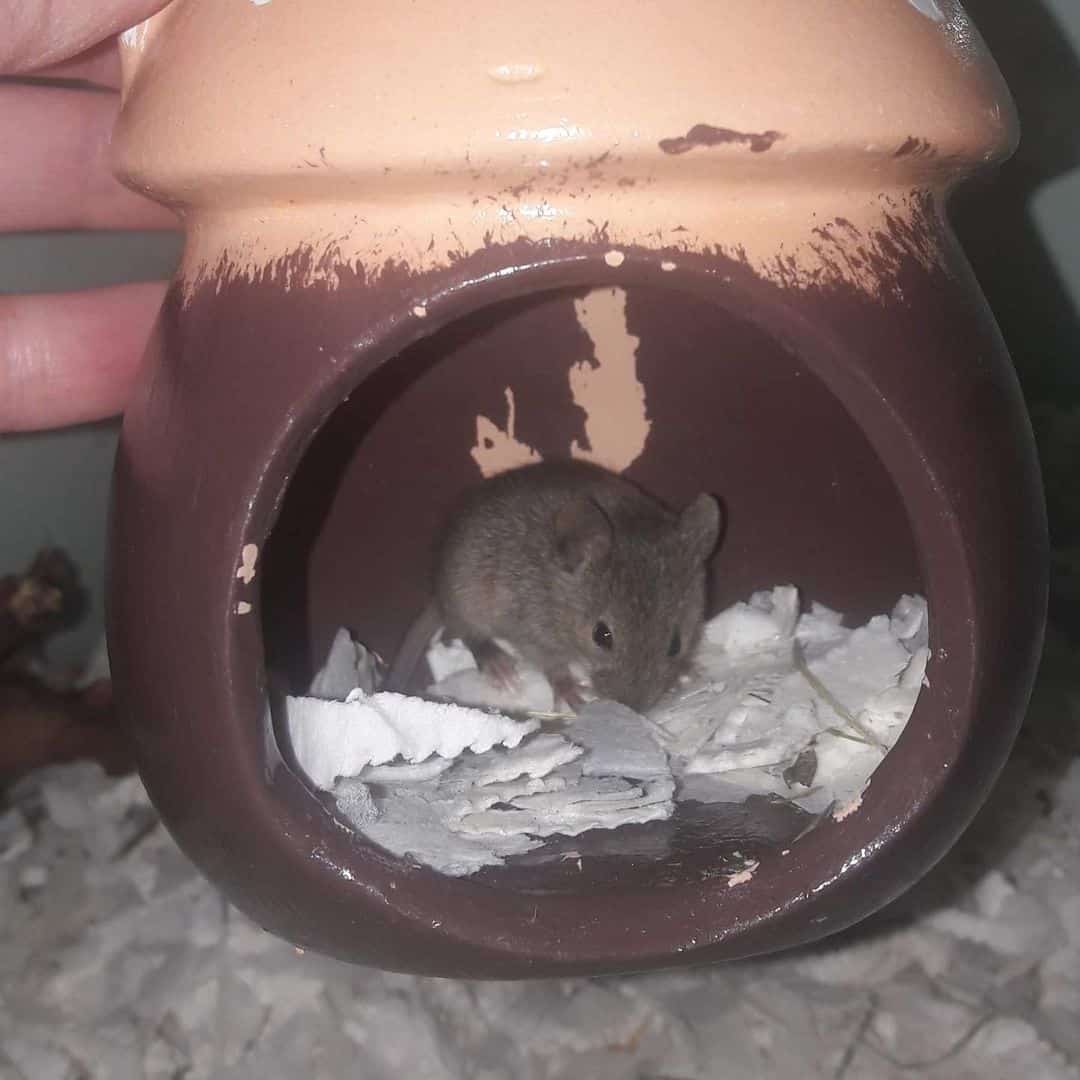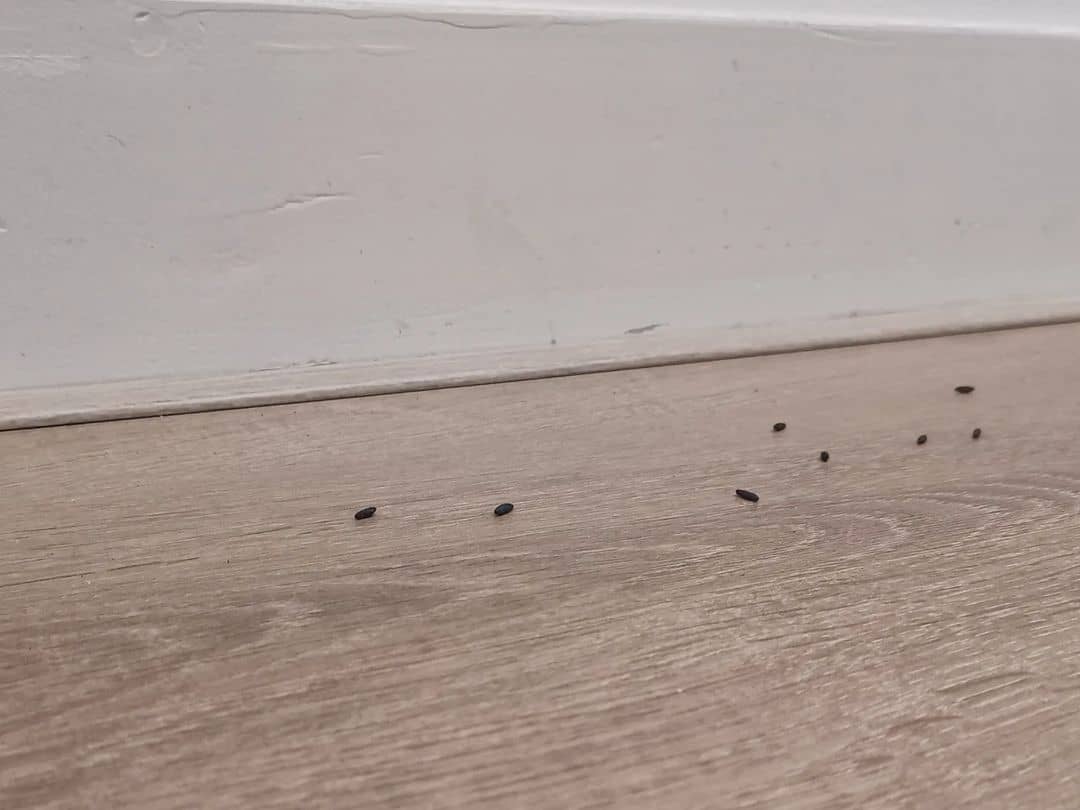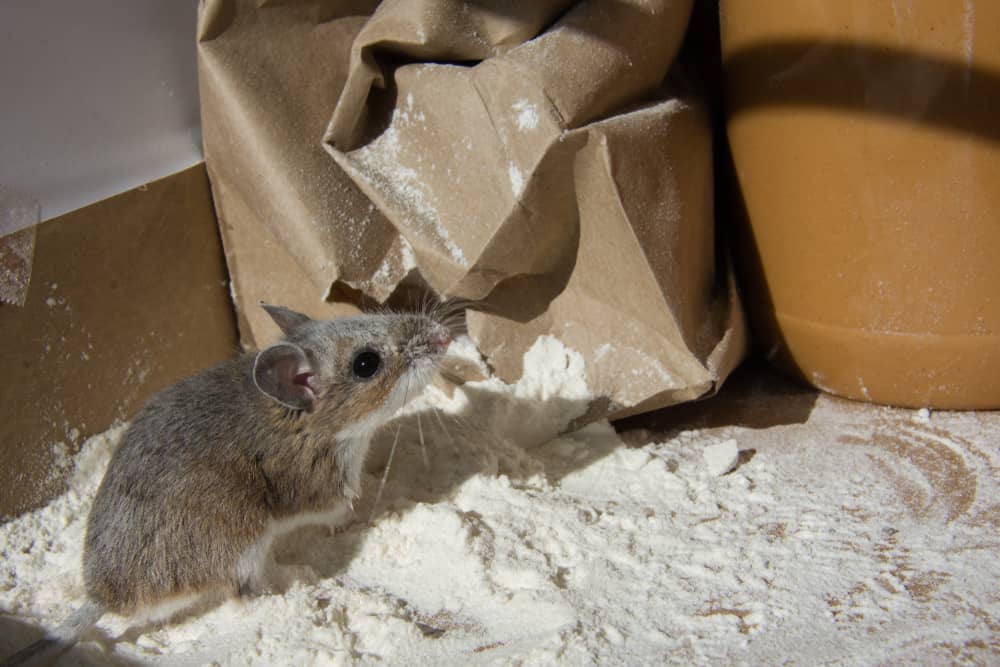Have you noticed little black pellets around your kitchen, living room, basement, or other areas and wondered if you might have a mouse infestation in your home?
It’s very important to be certain, and one way to confirm their presence is by looking at the droppings. However, it’s hard to know what mouse poop really looks like when other insects’ and rodents’ droppings look similar.
In this article, we’ll clarify that confusion and explain how to distinguish mouse poop from other rodent droppings. We’ll also explain why it’s important to identify mouse droppings and how they can help eliminate rodents from your home.
Importance of Identifying Mouse Droppings
- Health Hazards: Mouse droppings can carry harmful bacteria, viruses, and parasites that can cause serious health problems if they are not handled properly.
- Indication of a Mouse problem: Finding these droppings is often the first sign of a mouse infestation in your home or business. Early detection and treatment can prevent the spread of disease and minimize the damage to properties and structures caused by these rodents.
How to Identify Mouse Droppings
Distinguishing mouse droppings from those of roaches, beetles, and other rodents can be a bit tricky. But these specific characteristics should help you.
1. Small Size
Mice droppings typically measure between ¼ to ½ an inch in length and about as wide as a grain of rice. However, the exact size varies depending on the age and type of mouse.
If you identify droppings noticeably larger and often measuring above ½ an inch in length, it is possible that a rat or another rodent may be present.
2. Color
Fresh mouse droppings are usually black or dark brown with a slightly shiny outer surface, but they may turn grayish or lighter as they age. They also tend to have a chalky or dried appearance when they are older.
Also, in rare cases, the droppings may be slightly green due to poison or wrong dieting. In this case, it would be difficult to identify the droppings, so we recommend considering other characteristics like shape and size.

3. Shape
Most pest droppings can vary because they eat a large variety of things. However, mouse droppings usually have pointed ends, unlike rat droppings, which have more blunt ends. Although, there can be some exceptions to this shape, depending on the specific mouse species.
4. Texture
Mouse poop typically has a grainy texture, similar to coarse sand or granulated sugar. You should also notice a smooth surface between distinctive pointed ends upon close inspection. The texture of the droppings can vary slightly depending on the mouse’s diet.
5. Quantity
A mouse can produce up to 50 to 75 droppings daily, especially if they live in the area for long periods. So you’d mostly have many small, granular pellets in one area, often in piles or clusters.
6. Location
Mouse droppings are often found where they are most active, such as in and around food storage areas, under sinks, inside drawers, and hidden corners.
How to Handle Mouse Droppings in 8 steps (Cleaning and Disinfection)
What you need to do before you start cleaning
- Wear gloves to avoid direct contact with the mouse droppings. You can use disposable or reusable gloves that can be washed and disinfected after use.
- To prevent inhaling harmful particles, wear a mask that covers your mouth and nose. This is especially important if you have allergies or respiratory problems.
- Open windows and doors to increase ventilation while cleaning up mouse droppings. This will help to reduce the concentration of airborne particles and odor.
To start the cleaning process.
- Use a damp cloth or paper towel to pick up mouse droppings, being careful to avoid creating dust. Place the droppings and cleaning materials in a sealed plastic bag and dispose of them in your outdoor trash container.
- Next, clean the affected area thoroughly with warm water and soap to remove any remaining droppings and debris. Avoid using a dry cloth or sweeping, as this can create dust.
- Use a disinfectant or a bleach solution and water(1:10) to clean up the area where the mouse droppings were found. Let the disinfectant sit for several minutes before wiping it with a paper towel or cloth.
- Allow the affected area to air dry completely, or use a clean, then use a dry cloth to wipe up any remaining moisture.
- Repeat the cleaning and disinfection process several times to ensure that all droppings and contaminated surfaces are properly cleaned and disinfected.

Tips for Preventing Mouse Staying Your Home
1. Seal Entry Points into your Home
To make sure mice don’t sneak into your home, it’s best to inspect the outside of your home and look for any potential entry points they could use. For example, walk around outside your home and look for cracks, gaps, or holes in walls or outside doors. Also, pay more attention to areas where pipes and wires come into the house, as these are common entry points for mice.
To seal these entry points, you can use steel wool or caulk. For larger gaps and crevices, you can use foam insulation. Also, make sure all windows and screens fit tightly in their frames.
2. Keep Your Home Clean
The smell of food can attract mice, so it’s important to ensure that all food items are stored in airtight containers. This includes pet food. Don’t leave any leftover food on countertops or in open bags where a mouse can easily find it.
Also, immediately clean up any spills or crumbs and take out the trash regularly. Trash cans should have tightly-fitting lids that these rodents cannot easily remove.
More importantly, make sure you stay on top of cleaning tasks like vacuuming and sweeping regularly. Pay close attention to corners and under furniture where mice may have left behind small crumbs or scraps of food. Keeping these areas clean will go a long way in preventing an infestation.
3. Eliminate Hiding Places
These rodents love being hidden, and if your home provides the perfect hiding spot for them, then they will start creating a colony there.
To prevent this, remove any unnecessary items that could provide a hiding place for them, such as piles of newspapers and cardboard boxes, and ensure all storage areas like closets, garages, and basements are well-organized and items are stored in sealed containers.
You should also keep furniture away from walls. A mouse can climb up the back of furniture and eat through the back or underneath, using it as a hiding place. Keep furniture at least a few inches away from walls to make it more difficult for them to get on top of the furniture. This will make your home much less inviting for them.

4. Use Repellants
Several natural and chemical repellents can prevent mice from entering and infesting your home. Here are some options to consider:
- Peppermint oil– Every few days, Spray a mixture of 10ml of peppermint oil and 240ml of water in places the mouse is likely to enter or nest. The powerful odor of peppermint will help repel them from the area. You can also put cotton balls soaked in a few drops of peppermint in these areas.
- Mothballs– Mothballs contain a chemical called naphthalene that is toxic to mice. Place mothballs in areas these rodents are likely to pass through, such as closets, garages, and attics.
- Ultrasonic repellents– Ensure you get an ultrasonic repellent that emits a high-frequency sound between 20 and 30 kHz that is unpleasant to mice. These devices can be plugged into an outlet and placed in strategic areas.
5. Work with a Pest Control Professional
A pest control professional has the experience and tools to identify and eliminate a mouse infestation. Here’s what you can expect from working with them:
- A pest control professional will inspect your home to identify the source of the infestation, as well as any entry points or nesting areas, and provide recommendations for preventing future infestations
- Based on the severity of the infestation, they will recommend an effective treatment plan that may include traps, baits, and other methods.
- These experts will also schedule follow-up visits to ensure the treatment plan is working and address any remaining issues.
Conclusion
Mouse droppings are a key indicator of a mouse infestation in your home or business. Understanding the physical appearance and key features of these droppings can help you quickly identify them and take action to solve the problem.
Here are some key features to remember
- Mouse droppings are small and cylindrical, typically around 1/4 to 1/2 inch in length.
- Fresh mouse droppings are dark in color, while older droppings may have a more faded or gray appearance.
- Mouse droppings are usually pointed at both ends and have ridges running down the sides.
Please don’t hesitate to comment below if you have any questions or concerns about identifying mouse droppings or controlling a mouse infestation. Our team is here to help and provide you with the information and support you need.
